| Maya Studies / Libros sobre los Mayas |
We are delighted to feature acclaimed books on the Maya published by distinguished university presses from the U.S. and Canada.
Estamos encantados de ofrecer libros aclamados sobre los mayas publicados por editoriales universitarias distinguidas de los EE.UU. y Canadá.
|
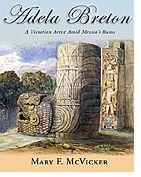 |
| To order, click the cover. |
|
Adela Breton: A Victorian Artist Amid Mexico's Ruins
Mary F. McVicker
Adela Breton (1849-1923) was a Victorian gentlewoman whose parents supported her education and artistic training. Anthropology and the "new" science of geology appealed to her father and soon captured her own interest. After her father's death in 1887, Adela began a lifetime of travel, exploring past cultures and landscapes. Often camping or staying in small villages, accompanied only by her Indian guide and companion, she created a pictorial account of the Mexican countryside in the 1890s.
Famed archaeologist and fellow Briton Alfred P. Maudslay, aware of Adela's talents, asked her to return to Mexico and check his copies of the murals at the ruins of Chichen Itza¡ in the jungles of the Yucatan. This was the turning point in her career that would lead to international recognition as an archaeological copyist, researcher, and interpreter of the rapidly disappearing painted walls of ancient Mexico. Today her artwork is the only detailed color record of many aspects of the Pre-Columbian past.
When the Mexican Revolution of 1910 ended her travels to Mexico, she turned her inquiring mind to linguistics and began her study and copying of rare colonial-era documents. Mary McVicker writes of Adela Breton, her independence from the strictures of Victorian life, her career as a pioneering artist-archaeologist, and the enduring significance of her work.
"A flowing account of an interesting life reclaimed from obscurity."--Choice Magazine
"This is an engaging story about the accomplishments of a unique individual who often worked under difficult and dangerous conditions in documenting the ancient civilizations of Mexico."--New Mexico Magazine
Mary F. McVicker holds degrees in finance and law, writes extensively on small business, and is a published author of books for young adolescents. She lives in Oak Park, Illinois.
8 x 10 224 pages 20 color photographs, 20 halftones, 1 map. $17.95 USD
|
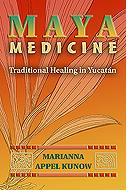 |
| To order, click on the cover |
|
Maya Medicine: Traditional Healing in Yucatan
Marianna Appel Kunow
This account of the practice of traditional Maya medicine examines the work of curers in Pisté, Mexico, a small town in the Yucatán Peninsula near the ruins of Chichén Itzá. The traditions of plant use and ethnomedicine applied by these healers have been transmitted from one generation to the next since the colonial period throughout the state of Yucatán and the adjoining states of Campeche and Quintana Roo.
In addition to plants, traditional healers use western medicine and traditional rituals that include magical elements, for curing in Yucatán is at once deeply spiritual and empirically oriented, addressing problems of the body, spirit, and mind. Curers either learn from elders or are recruited through revelatory dreams. The men who learn their skills through dreams communicate with supernatural beings by means of divining stones and crystals. Some of the locals acknowledge their medical skills; some disparage them as rustics or vilify them as witches. The curer may act as a doctor, priest, and psychiatrist.
This book traces the entire process of curing. The author collected plants with traditional healers and observed their techniques including prayer and massage as well as plant medicine, western medicine, and ritual practices. Plant medicine, she found, was the common denominator, and her book includes information on the plants she worked with and studied.
"Anyone with an interest in ethno-botony or traditional healing will likely enjoy reading Maya Medicine."--SIDA
"Readable, concise, and never overreaching the data at hand, this book has value for present and future students of Maya culture and botany."--Plant Science Bulletin
Marianna Appel Kunow holds a Ph.D. in Latin American Studies. She teaches Spanish at Southeastern Louisiana University.
6 x 9 160 pages 36 line drawings, 1 map. $29.95 USD
|
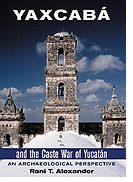 |
| To order, click on the cover. |
|
Yaxcaba and the Caste War of Yucatan: An Archaeological Perspective
Rani T. Alexander
The Caste War of Yucatan (1847-1901) is widely regarded as the most successful Indian rebellion in the New World. An attempt by the Maya to rid themselves of foreign domination and revitalize their traditional culture, the conflict led to successful agrarian reform and the reassertion of traditional land use by the Maya. It also generated a new religion with its own priesthood and cultural practices focused on the worship of a prophetic "talking" cross. This war's economic and cultural transformations provide blueprints for understanding present-day Mexico and the expansion of capitalism to rural areas worldwide.
Although important in its consequences, the origins of the war and its interpretations remain controversial. Rani Alexander's interdisciplinary study uses archaeological evidence along with ethnography and history to understand the nature of the region's agrarian system and the processes of resistance. Yaxcab á and its environs, caught in the crossfire of the conflict, were attacked and burned nine times in the course of the war. In view of the enormous loss of life and destruction of property, the postwar agrarian reform seems to be a consequence of economic ruin rather than successful resistance. Only an interdisciplinary approach to these complex events can produce the complete picture that Alexander's work provides.
"Alexander gives us real-world explanations for the field evidence, not the simplistic 'just-so' models that afflict so much of prehistoric archaeology. This is a short book but it leaves a long aftertaste, and archaeologists of all persuasions will find something to think about."--Antiquity
"Alexander has produced a fairly complete perspective about Yaxcabá and its historical tie with the Caste War. This book is recommended to both scholars and the general reader."--Colonial Latin American Historical Review
"An impressive work of original scholarship and a highly recommended addition to academic library reference collections and New World Archaeology supplemental reading lists."--The Midwest Book Review
"This work will be of interest both to historians of that period of Mexican history and to students of the ancient Maya as an informative case study for interpreting the evidence that house lot surveys may yield. . . Recommended."--CHOICE Magazine
Rani T. Alexander is an associate professor in the department of sociology and anthropology at New Mexico State University, Las Cruces.
7 x 10 223 pages 22 halftones, 7 maps. $55.00 USD
|
 |
| To order, click on the cover. |
|
The Monuments of Piedras Negras, an Ancient Maya City
Flora Simmons Clancy
Patronized by royalty between the sixth and eighth centuries, the monuments of Guatemala's ancient Maya city of Piedras Negras were carved by sculptors with remarkable skills and virtuosity. Together patrons and sculptors created monumental imagery in a manner unique within the larger history of ancient Maya art by engaging public viewers through illustrations of ceremonies focusing on family and the feminine in royal agendas.
Flora Clancy's introduction contextualizes her work with other studies and lays out her methodological framework. She then discusses the known monuments of the city sequentially by reigns. Individual rulers are characterized by a biography drawn from the hieroglyphic texts and the icons or imagery of their monuments are analyzed and discussed.
Although the monuments of Piedras Negras are acknowledged as social, political, and cultural productions, Clancy also treats them as works of art that at their best operate on transcendent levels dissolving and overruling the contingencies of history and cultural differences.
"Highly recommended."--Choice Magazine
"This well-written scholarly work is very readable and is recommended to the student, professional, and general reader seeking an in-depth study of ancient Mayan places."--Colonial Latin American Historical Review
Flora Simmons Clancy is professor emerita of art history at the University of New Mexico. She is a highly respected scholar in Maya art and iconography whose research has focused on Guatemala, Honduras, and Mexico.
7 x 10 240 pages 11 halftones, 53 line drawings, 2 maps. $45.00 USD
|
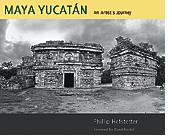 |
| To order, click on the cover. |
|
Maya Yucatan: An Artist's Journey
Phillip Hofstetter
Foreword by David Freidel
"Before ever setting out on my adventures in Yucatan I did not know that I was preparing to walk a spiritual path in that ancient country. Before going there I had not taken much account of my yearning to seek out sacred places. But in Yucatan I discovered this longing for wandering among the people and landscapes of the peninsula. I eventually understood that there was an invisible spirit world of the Maya that animated their stories, their ancient ruins, and all their works from two thousand years of civilization in that ancient land."--from Maya Yucatan
Phillip Hofstetter first visited Yucatan in 1987 and was entranced, as much by the sheer physical beauty of the region as by the enduring character of the Maya people still inhabiting the region. For more than twenty years he has been documenting his travels in Yucatan and his professional collaboration with archaeological excavation projects there. His reflections on the Maya culture emphasize survival and adaptation, while images of ancient sites, the churches of the Franciscan mission period, and the ruined haciendas of the henequen period serve as physical reminders of the enduring ways in which the Maya have shaped the landscape of Yucatan over millennia.
"Hofstetter's book imparts a fresh, multifaceted perspective on the perennially fascinating Mayans. One enjoys the intriguing expert photographs of age-old ruins as much as the knowledgeable and observant update on their culture in today's Central America."--Midwest Book Review
"Hofstetter's collection of 102 expertly crafted black-and-white images documents his adventures and includes shots that capture modern daily life in the area, providing an interesting contrast to the monuments of the past."--Shutterbug Magazine
Phillip Hofstetter is codirector of the Multimedia Graduate Program and is an associate professor of art at California State University, East Bay. He is also a videographer whose work has appeared on National Geographic Television and the Discovery Channel.
11 x 9 160 pages 102 color and black-and-white photographs, 1 drawing, 2 maps. $60.00 USD
|
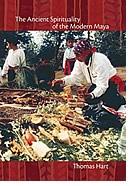 |
| To order, click on the cover. |
|
The Ancient Spirituality of the Modern Maya
Thomas Hart
Since the arrival of the Europeans, the indigenous people of what is now Guatemala have endured massacres, persecution, and discrimination. Their religious beliefs and practices have been condemned as superstition and witchcraft. Yet the spiritual worldview of the Maya has survived and even flourishes, five centuries after the invaders' first attempts to destroy it.
In The Ancient Spirituality of the Modern Maya, Thomas Hart weaves together the stories and experiences of those who practice Maya spirituality today, based on the relationship between God, the World, and the Ancestors, and provides a sense of the Mayan worldview as it is revealed through myth, ceremony, and teaching. The information provided by Hart adds a modern perspective to this largely oral traditional culture and provides a unique insight into its practice today, with its many variations and with the adaptability that has sustained it for over five hundred years.
"The accounts [Hart] relates are so rich, and so deeply informed by thoughtful consideration over fifteen years of work, that all should find sufficient reason to appreciate this book."--The Latin Americanist
Thomas Hart has lived in Guatemala since 1993. He currently works on indigenous health projects with a British development organization based in Quetzaltenango.
7 x 10 286 pages 23 halftones, 20 line drawings. $45.00 USD
|
|